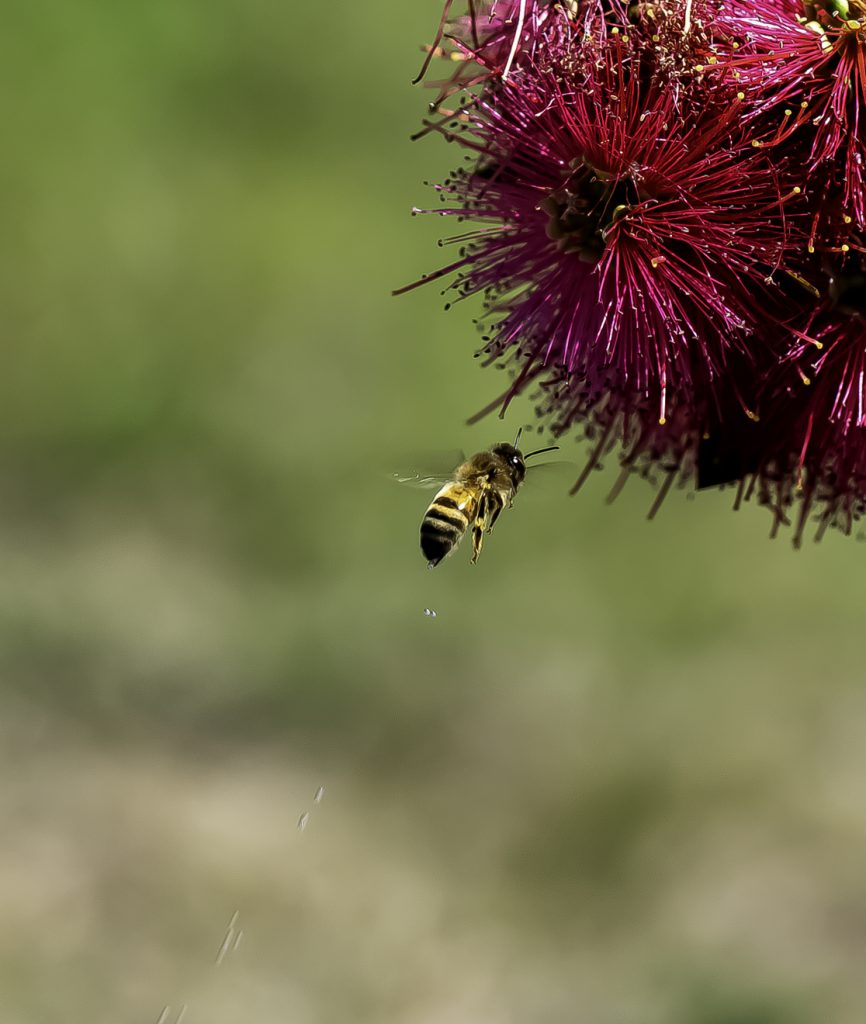
“This was the first year I’d seen our bottlebrush in full bloom and it had a lot of bees around it so I got my camera out. I sat there for several hours over several days just happily snapping away and watching them,” Liz said.
“When I downloaded the photos, I realised I had caught this shot and looked up ‘bee peeing’ on the internet. From there, I’ve been on this journey and found out more about bees than I ever expected!”
In her quest for more information, Liz contacted Entomologist Juanita Rodriguez at CSIRO’s Australian National Insect Collection, who confirmed the sighting was pretty rare.
“This is a rare event Liz captured and she took an excellent photo. Bees release liquid waste called uric acid, but they release it in such small amounts so it’s unusual to witness it – and images like this are rare,” said Juanita.
Uric acid is a liquid waste that is formed in a bees malpighian tubules – the insect equivalent of kidneys. Here, it’s mixed with other waste products before it is expelled out of the body. The amount of uric acid that’s released is very small. This makes an image capturing this moment very rare.
Because of this, Juanita encouraged Liz to upload the observation to iNaturalist Australia. This enabled the sighting to become a useful piece of biodiversity data accessible via the ALA. The observation, known as an occurrence record, contains useful data such as location, date, time as well as information about the species.
There are many different apps that feed data into the ALA. For a full list of apps and citizen science projects search the Australian Citizen Science Project Finder.
“I knew this was a rare photograph, and I thought there must be someone somewhere who can use this photo for bee education or similar. But I was at loss on where I could post it to share it properly,” said Liz.
“I was really grateful to learn about iNaturalist and am really happy to share it with others who also may find it interesting. I love my little bee photo – I’ve called him Bubble Bum due to the bubble on his bum!”
To upload your own observations, visit https://inaturalist.ala.org.au